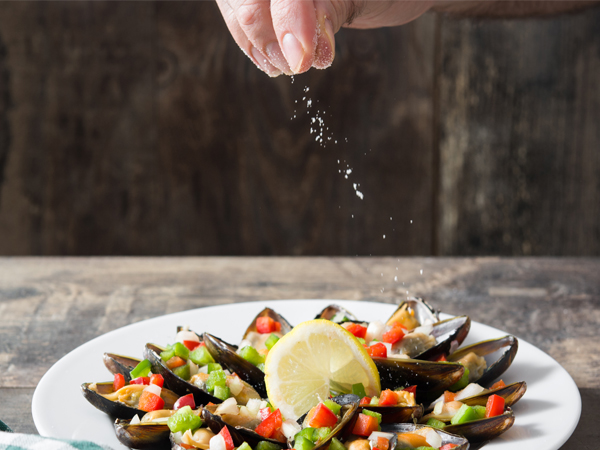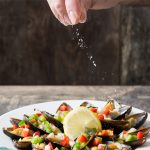
Why Should You Salt Everything
Why Should You Salt Everything?
Salt offers a world of flavors to explore and intensifies the delightful tastes in your dish! So the answer is simple, salt makes everything taste better.
Five Basic Flavor Profiles We Taste
There are five basic flavor profiles The are sweet, bitter, sour, umami and salty. When salt is used properly, it improves the flavor of your dish by reducing bitterness. It also increases sweetness, sourness, and umami. When used in higher concentrations, it can suppress the sweetness in savory foods while enhancing the umami profile. And this is why we add salt to nearly everything we eat and cook!
Not All Salts Are Created Equal
Salt comes from all over the globe and in many different varieties. A few of the most notable variants are table salt, kosher, sea, Fleur de Sal, Himalayan, or flavored options like truffle or Togarashi. It’s original use was intended for the preservation of foods, primarily meats and vegetables. Now, we use it in everything! Fun fact, Romans used it as currency to pay their soldiers. I personally would much rather be paid in salt, don’t tell my boss!
They are ranked by quality. This ranking runs the gamut from basic table to the famous Fleur de Sel that hails from France and Italy. The diversity in this seasoning’s texture, color, and level of saltiness are endless, so which one takes the top spot is simply a matter of opinion. The flakiness, coarseness, and concentration of taste vary as well. Like everything else in cooking, taste as you go. Chefs will have their favorite salts for different purposes. Sometimes you may be in a pinch and not have the right salt, here is a conversion for the best substitutes and amounts to use.
Type of Salts Uses
Table Salt – Clean taste dissolves quickly often used cor cooking and baking. Iodized salt may have a slightly chemical aftertaste.
Kosher Salt – Flakier and coarser than table . It is often used in kosher butchering process. Clean flavor that takes longer to dissolve than table salt. Often used for salting meats, roasting vegetables, pickling and general seasoning at end of cooking.
Sea Salt – Similar taste as table, but with some complex mineral notes. Use on meats, seafood and vegetables.
Himalayan Salt – Purest form of salt in the world with a distinct salmon color and large irregular particles. Heat tolerant up to 1,200°F! High mineral flavor with complex notes. Use for seasoning meats, salads, soups, vegetables.
Fleur de Sel – Paper thin and taken from the surface of French tidal pools. It’s one of the best finishing salts and a little goes a long way. Crunchy texture with a light briny, delicate flavor. Use on grilled foods, salads, baked goods, candy, vegetables, meat and seafood.
Learn about more salt types including Hawaiian
Salt gets a bad rap, but it does provide our bodies with vital minerals for our health. So like everything these days, moderation is the key. And on the next hot summer day, slice some watermelon and give it a little, salt bae-inspired, sprinkle and let us know your thoughts… mmm. While you are at it reach out to our Sales Team to see if we have the right salt for your establishment.
Why Chef Blog April 2022
Related Topics
